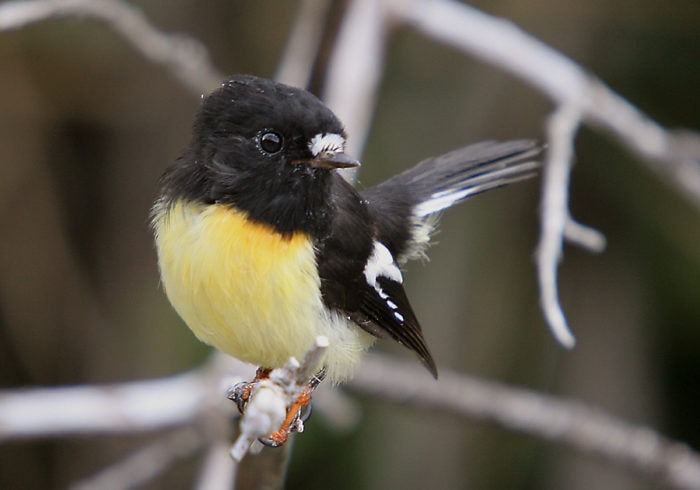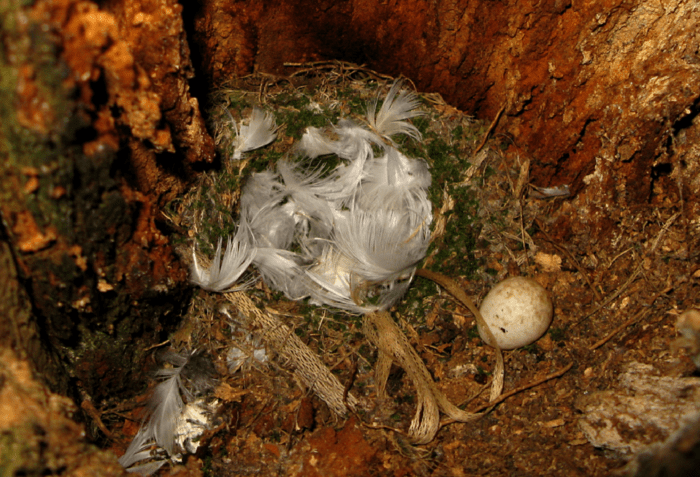The extraordinary survival story of the black robin

Bec Crew
Bec Crew

FOUND IN THE forests of South East Island (Rangatira) and Mangere Island in New Zealand’s Chatham Islands group, the black robin is a small, sparrow-sized bird with ashy black and brown plumage. It mates for life, nests in hollow trees and stumps, and is a poor flyer.
This spelled disaster for the species just a few decades ago, when cats and rats depleted the population to a mere five individuals. And even worse – only one of those was a mature female.
Old Blue was her name, and she is the mother of all the black robins in existence today.
Back in 1980, when the population was at its lowest point, Dr Don Merton, an officer in the New Zealand Department of Conservation, set about breeding a bunch of new babies through Old Blue.
Black robins usually only lay two eggs per year, but Dr Merton suspected that if he were to ‘steal’ those eggs, Old Blue would quickly lay some more.
So, each time Old Blue laid her eggs, he would surreptitiously remove them and place them in ‘foster’ nests of tomtits – another species of Australasian robin. He would then have to time their return to the black robin population perfectly, so the tomtit-raised young wouldn’t try to mate with their adopted families when they reached maturity.

The South Island Tomtit. (Image credit: Mark Jobling/Wikimedia)
This delicate operation caused the numbers of black robins to grow at levels far greater than they would ever do naturally, and today there’s an estimated 230 mature individuals, and the population is continuing to increase.
Interestingly, while this type of extreme inbreeding can lead to a genetic bottleneck, where limited genetic variation causes a population to suffer harmful mutations, the black robin population appears to be doing very well.
But this might not have been the case had Dr Merton and his team not paid careful attention to what was going on in the early stages of their conservation plan.
When they were tending to Old Blue’s eggs – and those of her adult daughters – they made sure to move any laid on the edges of the nest into the centre. These so-called ‘rim eggs’ are less likely to hatch, so by moving them into the centre of the nest, they were ensuring a higher success rate.

Rim eggs in a black robin nest. (Image credit: Massaro M, Sainudiin R, Merton D, Briskie JV, Poole AM, et al)
Of course, if left alone, the rim egg-laying birds would struggle to pass on their genes, because their eggs would rarely survive. So, by meddling with the natural order of things, Dr Merton and his team were unwittingly allowing the rim egg-laying genes to spread throughout the black robin population.
By 1989, even though the conservation plan was considered a success, 50% of the female black robins were laying vulnerable rim eggs.
Once the scientists realised what had happened, they stopped moving the rim eggs into the centre of the nest, and let nature take its course. By 2011, the percentage of rim egg-laying females had fallen to 9%.
It was a close call, and a great example of how good intentions can have unforeseen effects if all scenarios aren’t accounted for.
Ultimately, the result has been incredible for the species, and while black robins are still considered endangered, they are no longer critically so. In fact, the program is now being used as a case study for how to save endangered birds around the world.
And what of Old Blue, the lady robin who made all of this possible? She lived to the ripe old age of 14 – unheard-of in a species with an average lifespan of four.
Meet Dr Merton in the video below, as he explains the operation in detail:




